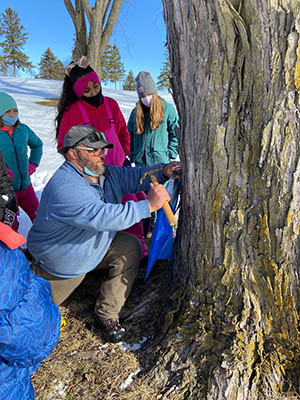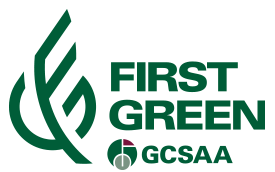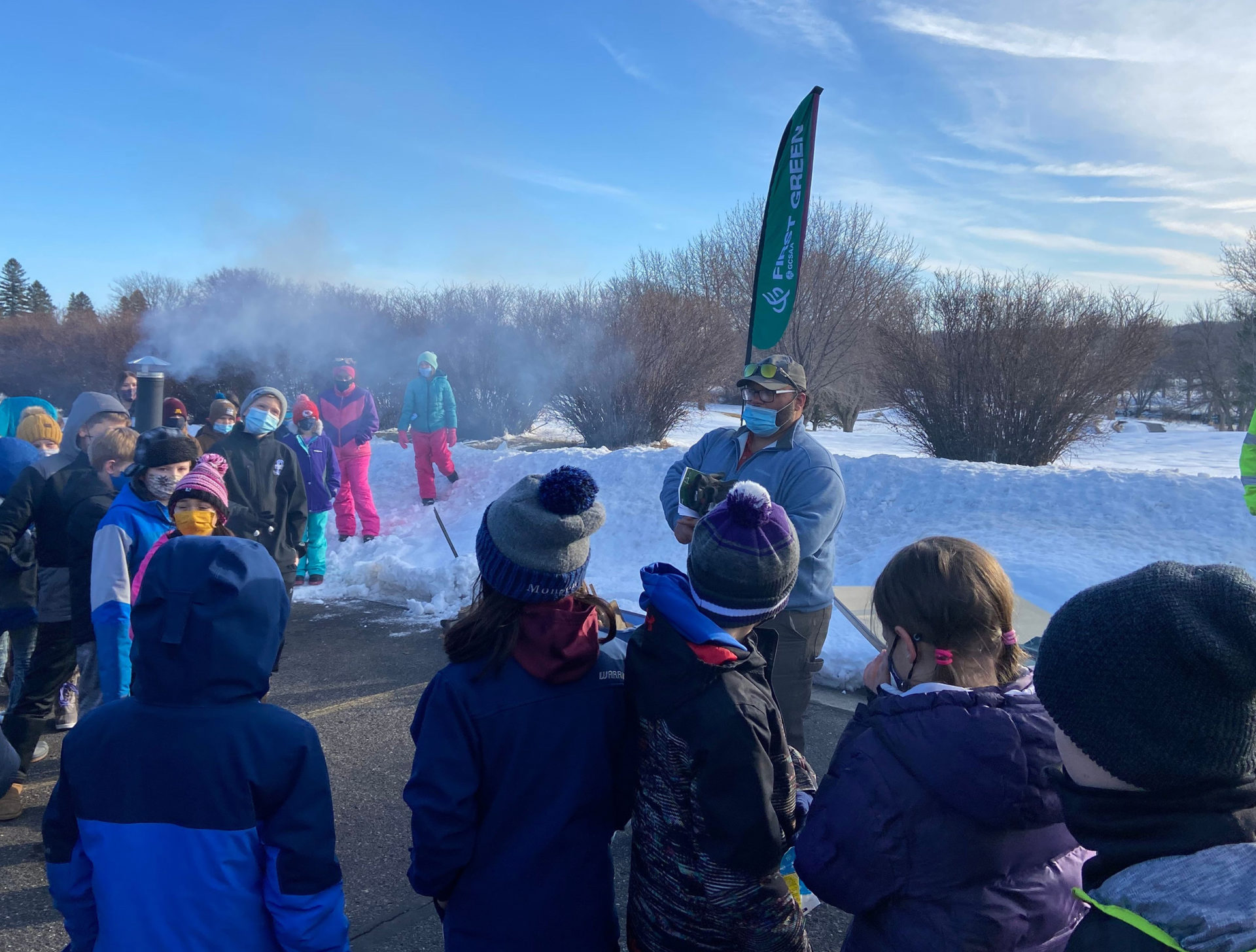On a cold and snowy March morning, 90 fourth grade students from Washington Elementary participated in a fun, hands-on STEM field trip. While the snow on the ground meant they weren’t able to try their hand at a putting contest, they did get ice cream with warm maple syrup on top! There were no complaints.
Nikk Dickerson, golf course superintendent at Owatonna Country Club, had offered to host a First Green field trip in his community but had not been able to make a connection with a local school. That changed when he again brought up the opportunity of a First Green field trip to his child’s fourth grade teacher and the subject of maple syrup and sugaring came up. It seems that the fourth graders were exploring maple syrup production in the coming weeks and the teacher knew that Dickerson had extensive experience with the subject.
“I’ve been collecting sap and making maple syrup at my facility for six years. We’ve had youth groups such as local Boy and Girl Scout troops come out and learn about tapping trees, collecting sap and cooking the final product, but not the school district. I was happy to have them come out.” Dickerson shared.

The beauty of First Green is that it is completely adaptable to what the host superintendent and teacher would like to focus on. In this case, the maple syrup production dovetailed with what fourth graders were learning in the classroom. Dickerson included two learning stations focused on maple syrup and he included three other stations that are part of the traditional First Green line-up.
Owatonna Country Club First Green field trip agenda:
- Station 1 – Identifying/Tapping Maple Trees
- Station 2 – Migratory Bird Habitat
- Station 3 – Soil Composition and Filtration
- Station 4 – Math in Action. Area Calculations (rectangles and rectilinear shapes)
- Station 5 – Prepping and Cooking Sap to Syrup
The students were split into five groups, and due to COVID-19 protocols they kept cohorts together and minimized interaction between groups. Each learning station lasted 30 minutes and then the groups rotated. The students were at the field trip from 8:45 a.m. to 12:10 p.m.

